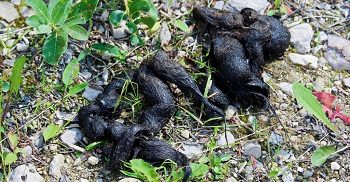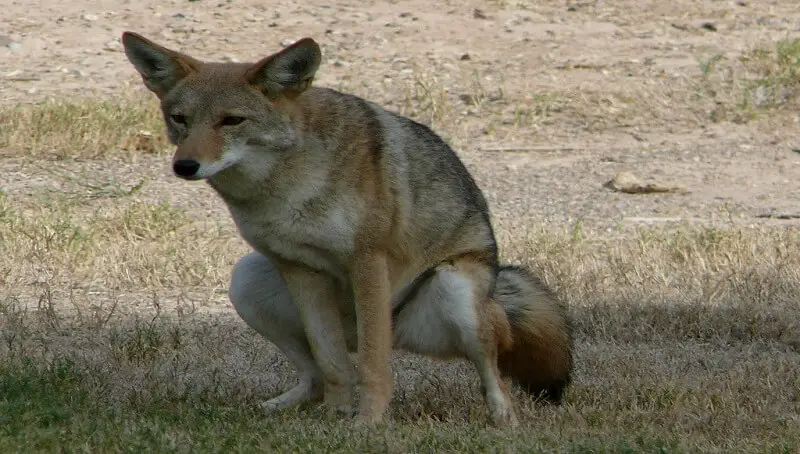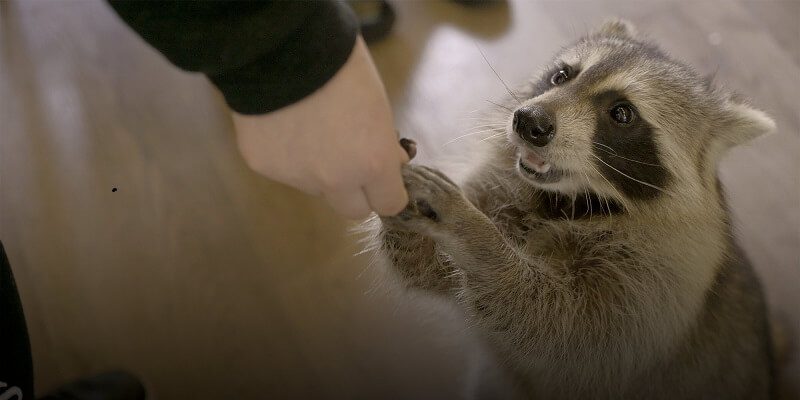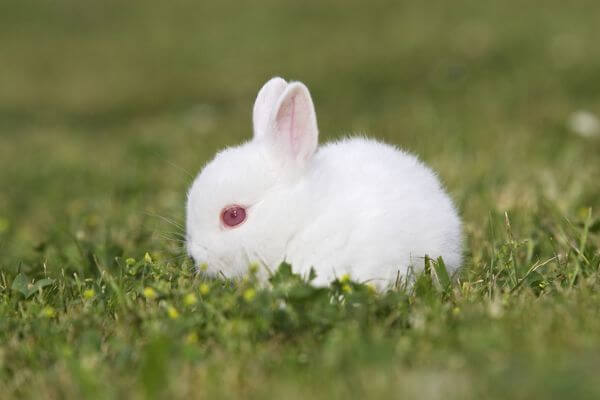Most people usually have no problems with coyotes roaming around their homes because they consider these animals harmless and cute. The truth is that you shouldn’t be deceived by their looks because most of them are not just annoying, but also pretty dangerous (a lot more dangerous than your average medium-sized pet).
Coyotes come from the same family species as dogs, but they are considered one of the main carriers of disease-causing pathogens and deadly viruses like rabies. These animals won’t come too close to human settlements throughout the day and will like to hunt at night, even though they are considered diurnal.
You won’t be seeing coyotes all day long throughout your neighborhood most of the time. They choose to get very familiar with a certain place before they become frequent visitors. This is why you should try to keep track of any coyotes that pass through your premises before they become a regular presence.
Their paw tracks won’t be enough to identify their presence, especially since they are from the same animal family as dogs. Their poop remains one of the easiest ways of knowing for sure that you’re dealing with a coyote.
So, what does coyote poop look like?
Coyote poop usually looks like tubular droppings with tapered ends. You should expect each dropping to be 1 inch in diameter and a maximum of four inches long. In terms of the appearance and color of the coyote poop, it is worth noting that these will usually differ based on factors like the food they eat and the climate around them. Most of the time, Coyote poop will be brighter in color during summer and darker during the winter.
Below, I will get into bigger detail about the best way in which you can confirm you’re dealing with coyote poop, the general pooping behaviors of these animals, and how you can clear the poop safely, among some other important tips and tricks.
The pooping behavior of a coyote
When it comes to pooping, not all coyotes will have the same behavior. To mark their presence, they will usually poop in the border of their territories, or even in the middle of trails. This is because they are very territorial animals and want everyone to know that they will defend important areas around their den with all their strength.
You might also like my articles about the poop of birds, squirrels, or snails.
This means that when you have a coyote around you, you will notice a lot of poop scattered all around your area, especially if you also own a dog. This happens because the coyote actually believes that you and your dog are the ones living on its territory and not the other way around.
Coyotes will also figure out a spot for the latrine somewhere in your yard. This is the place where you will find coyote poop over and over again.
What does coyote poop look like?
 The poop of a coyote is pretty much similar to what a dog would poop. Most of the time coyotes will leave tubular droppings with tapered ends. These droppings shouldn’t be more than 1 inch in diameter and four inches long.
The poop of a coyote is pretty much similar to what a dog would poop. Most of the time coyotes will leave tubular droppings with tapered ends. These droppings shouldn’t be more than 1 inch in diameter and four inches long.
You should also know that coyotes are opportunistic hunters and omnivorous animals, which means they will hunt and eat almost anything they find. They will have different hunting and feeding habits based mostly on food availability and the general climate.
In winter, the poop of these animals will have a rope-like look and a darker color, mainly due to the creatures they eat and their furs. Their food will sometimes contain small bone fragments as well.
During the summer months, they will move on to a more vegetarian food, which is more available, making their droppings lighter in color. Hotter months come with an abundance of fruits like berries, a great food type for coyotes that won’t need to hunt as much. This also means that you won’t notice as much fur or bones in their poop during these months.
How can I identify a coyote poop?
As I already said above, you should expect coyote droppings to be very similar to dog poop. This means that you will have to roll up your sleeves and get into a closer examination to know for sure.
Look for a darker color poop in winter, with traces of fur in it. You can even use a stick to look closer for bone fragments inside it, due to coyotes eating more meat during the colder months.
During the summer months, identifying coyote poop will be harder because it won’t have any fur in it and will be lighter in color. You can use a stick and check for any berries or fruit seeds inside the poop, as this will be their diet for the hotter half of the year.
The diet of a coyote
The diet of a coyote will usually depend on the type of food available by season. They are considered omnivorous animals. They will hunt a lot during winter, their prey being mostly birds and small animals, because the availability of fruits is limited. On the other hand, in summer, they will take advantage of the abundance of different fruits and they will move to a more vegetarian diet.
Is coyote poop dangerous?
Coyotes should be prevented from getting close to your home because they are very invasive and a threat to animals, but also because they carry a lot of viruses, bacteria, and other pathogens. Among the many threats, the prominent one is tapeworm eggs they carry and transmit.
Thorough research has shown that around 20% of all coyotes will carry either tapeworms or tapeworm eggs in their bodies. These tapeworms and their eggs can be eliminated through the coyote’s poop. This poop can transmit these tapeworms especially if the eggs manage to hatch and multiply.
Although humans aren’t too vulnerable to infection with these types of worms, their pets will surely be. Especially pets that guide themselves using their noses like dogs or cats. The tapeworm eggs are so light that they can get inside the nose of the pet when it sniffs close to the poop and if they find a host, they can become a deadly threat.
Humans can also get infected with these tapeworms but it will be harder and it would require the individual to either get in contact with contaminated water or directly with the poop through an open wound.
These tapeworms will do a lot of damage if they get in a humans’ body and, in extreme cases, can even lead to death, which is why you should try to avoid touching the poop directly.
How to keep coyotes away?
Coyotes, throughout their history, have become very easily adaptable and intelligent. It is pretty hard to keep them away, especially since they are considerably more unpredictable than other pets.
- If you live close to woods, you should build higher fences, or even go for an electric fence.
- A pepper repellent sprayed around your yard might also help.
- Properly dispose of any food leftovers, especially foods that the coyotes like.
- If you have a garbage bin close to your home, make sure you secure it with a lid that is hard to remove.
- You should never feed coyotes even if they are pups. Throwing a small snack their way just one time would be enough for them to come back again and again.
Step by step guide to removing coyote feces
As I said above, coyote feces are dangerous to a human’s general health and to its pets. This means that handling it properly is very important to make sure you stay safe. You should always try to remove the poop from coyotes as soon as you find it, but with as much care as possible.
To make sure you’re safe from any negative effects of poop, follow these steps carefully.
- You have to wear new disposable gloves and have disposable material also covering your shoes. An N-95 grade mask will also be helpful. You should also incinerate both the mask and the disposable material and gloves when you are done.
- If the poop seems to have gotten very dry, pour some hot water on it. This is to prevent the tapeworm eggs from flying all over.
- With the help of a shover, lift the poop from the ground and move to a safe place. Set it on fire then, to kill any remaining parasites.
- The next step is to disinfect the area with boiled water and then clean that area with a strong cleaner or a disinfectant. This is to make sure that no parasites are left after cleaning the poop.
- As a final step, clean your hands with hot water and disinfectant, after burning the disposable gloves and mask.
You should also try to wash your clothes after you are one just to be safe. These should be washed in more detail, with both water and detergent, and then left to dry for a longer period of time.




